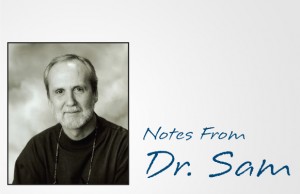Stuck in Neutral

We hear a lot about El Niño and La Niña, and how they influence the winter weather patterns over the United States, but did you know this weather phenomenon has ties to Christmas? It’s important to keep track of which one is occurring to have a better understanding of what North America and Arkansas might expect during the winter months—which climatologically means December, January and February.
I have talked about these before and what they are, but I’ve never addressed what the weather might do if neither of these patterns were in play, or in other words, a “neutral” year. Before I get to that, I’ll briefly review.
Both El Niño and La Niña are part of the El Niño-Southern Oscillation or (ENSO). ENSO is the cycle of warm and cold sea surface temperatures of the tropical, central, and eastern Pacific Ocean.
Countries that depend on their own agriculture and fishing, mostly those bordering the Pacific Ocean, are most affected. The term El Niño came centuries ago, when Peruvian fishermen noticed they were catching fish normally found hundreds of miles to the north. This observation of the warming water off the South American coast was made around Christmas time, so they named the phenomenon after the newborn Christ. In American Spanish the term El Niño means “the boy”. La Niña of course means “the little girl,” and refers to cooler than normalsea surface temperature.
For an Arkansas winter, El Niño brings the jet stream farther south over the gulf coast states, allowing colder air and wetter conditions to sink farther south as well. La Niña keeps the jet stream farther north, bringing warmer and drier conditions to the south. These patterns swing back and forth on average every 3-7 years.
The El Niño of 2019 is now over, and we are currently in a neutral cycle, which will continue into 2020. “Neutral” basically means the sea surface temperatures will not deviate warmer or cooler than 1 degree Celsius from the average. The last time we saw a neutral phase were the winters of 2012/2013 and 2013/2014. (December-February).
The winter of 2012/2013 averaged almost 3 degrees above normal temperature. Precipitation was almost 3” above the average. Snowfall was well above average with a total of 10.6”, 10.3” falling on December 25/26. The winter of 2013/2014 saw temperatures run 2 degrees below normal and precipitation near average over the same 3 months with snowfall totaling 4”, just slightly above the average of 3.1”.
When you compare these last two “neutral” winters, there is a huge difference in temperatures and precipitation. What this comes down to is that we don’t really know what winter will bring in a neutral phase. El Niño and La Niña really help when forecasting a winter trend, but we won’t have that in place this year. However, if you’re wondering what the winter forecast is for Arkansas in this neutral year, the Climate Prediction Center says that temperatures should be above normal, and precipitation will be near average, which is just over 12 inches. Does that mean snow? We’ll see. It certainly did the last years we went into the holidays in neutral.










0 comments